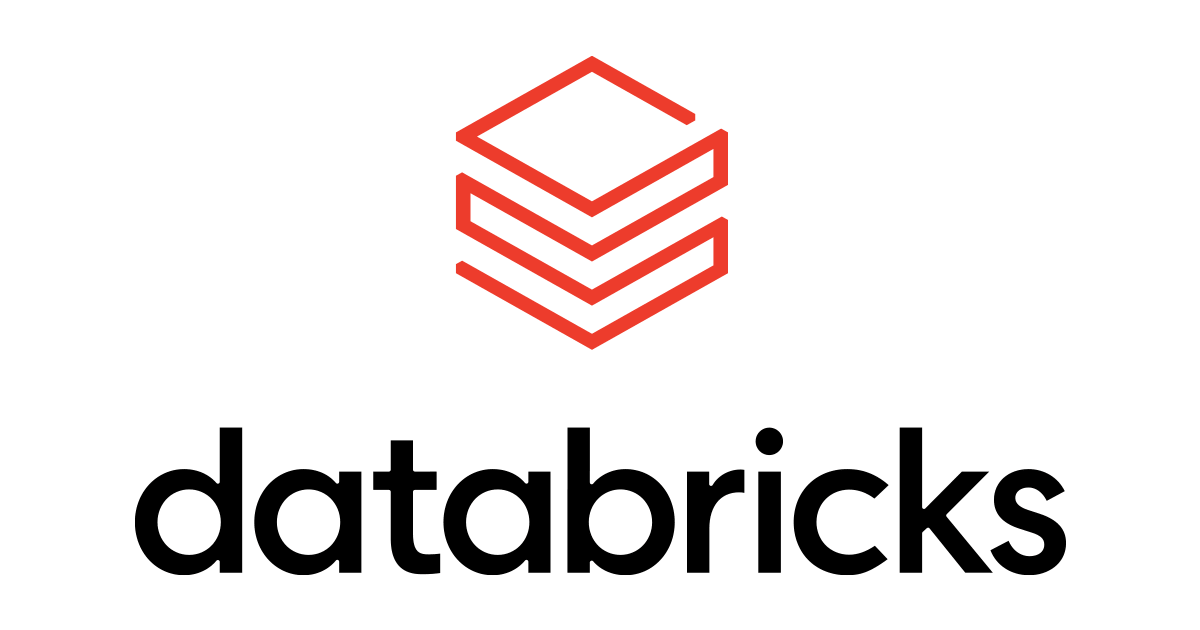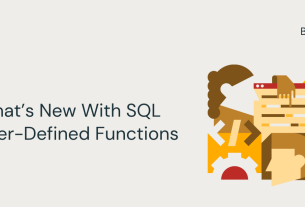We are thrilled to introduce the support of a new SQL feature in Apache Spark and Databricks: Lateral Column Alias (LCA). This feature simplifies complex SQL queries by allowing users to reuse an expression specified earlier in the same SELECT list, eliminating the need to use nested subqueries and Common Table Expressions (CTEs) in many cases. This blog post discusses the use cases of the feature and the benefits it brings to Spark and Databricks users.
What is Lateral Column Alias Support?
Lateral Column Alias (LCA) provides users the capability to reuse an expression specified earlier within the same SELECT list.
This feature can be better understood through the example provided below. Here is a simple query:
SELECT 1 AS a, a + 1In the absence of LCA support, users will get an error on this query that the latter a in the SELECT list cannot be resolved:
[UNRESOLVED_COLUMN.WITHOUT_SUGGESTION] A column or function parameter with name `a` cannot be resolved. ; line 1 pos 15;
Fortunately, with the LCA feature, this second a in the query now successfully identifies as the previously defined alias in the same SELECT list : 1 AS a. Users are no longer faced with an error, but instead provided with the following results:
> SELECT 1 AS a, a + 1
1 2Eliminate Complex Subqueries and CTEs with LCA Chaining
While the previous examples showcase the basic concept of LCA, the true power of this feature lies in its ability to eliminate complex subqueries and CTEs.
Before the introduction of LCA, users had to deal with multiple subqueries and CTEs when trying to reference any attribute defined by a previous alias. This increased the complexity and verbosity of SQL queries, making them hard to read, write and maintain. In contrast, LCA support fundamentally simplifies these queries, making them more user-friendly and manageable.
Let’s take an example. Suppose there is a products table storing product information such as name, category, price and customer rating. Our goal is to compute an adjusted price based on several influencing factors. The scenario will clearly delineate how LCA can turn a convoluted query into a significantly simplified version.
Here is the table structure:
CREATE TABLE products (
id INT,
name STRING,
category INT,
price DECIMAL(10, 2),
member_price DECIMAL(10, 2) COMMENT 'Special price for members',
rating INT COMMENT 'Customer rating ranges between 1 to 5'
) USING delta;
INSERT INTO
products
VALUES
(1, 'Product 1', 0, 100.00, 90.00, 3),
(2, 'Product 2', 1, 150.00, 120.00, 4),
(3, 'Product 3', 0, 200.00, 190.00, 5),
(4, 'Product 4', 2, 250.00, 210.00, 2),
(5, 'Product 5', 1, 300.00, 150.00, 1);
We would like to calculate the adjusted price for each product on the greater value of two factors: the price increase percentage based on users’ rating of the product and based on the rank of the product within its category. Without LCA support, the query looks like this:
-- BEFORE: without LCA
WITH cte1 AS (
SELECT id, name, category, rating, price,
CASE
WHEN rating = 1 THEN 0.02
WHEN rating = 2 THEN 0.04
WHEN rating = 3 THEN 0.06
WHEN rating = 4 THEN 0.08
ELSE 0.1
END AS increase_percentage_based_on_rating,
rank() OVER (PARTITION BY category ORDER BY rating) AS rating_rank
FROM products
), cte2 AS (
SELECT id, name, category, rating, price, increase_percentage_based_on_rating,
CASE
WHEN rating_rank = 1 THEN 0.2
WHEN rating_rank = 2 THEN 0.1
ELSE 0
END AS increase_percentage_based_on_rank
FROM cte1
), cte3 AS (
SELECT id, name, category, rating, price,
GREATEST(increase_percentage_based_on_rating,
increase_percentage_based_on_rank) AS final_increase_percentage
FROM cte2
)
SELECT id, name, category, rating, price,
CAST(price * (1 + final_increase_percentage) AS DECIMAL(10, 2))
AS adjusted_price
FROM cte3
The logic contains many chaining operations wherein a latter calculation depends on previously calculated results. Therefore it requires multiple CTEs to store each intermediate calculation in a manner suitable for later references in the subsequent stages of the query.
However, with LCA, it is possible to express the query as one single SELECT statement instead:
-- AFTER: with LCA
SELECT id, name, category, price, rating,
CASE
WHEN rating = 1 THEN 0.02
WHEN rating = 2 THEN 0.04
WHEN rating = 3 THEN 0.06
WHEN rating = 4 THEN 0.08
ELSE 0.1
END AS increase_percentage_based_on_rating,
rank() OVER (PARTITION BY category ORDER BY rating) AS rating_rank,
CASE
WHEN rating_rank = 1 THEN 0.2
WHEN rating_rank = 2 THEN 0.1
ELSE 0
END AS increase_percentage_based_on_rank,
GREATEST(increase_percentage_based_on_rating,
increase_percentage_based_on_rank) AS final_increase_percentage,
CAST(price * (1 + final_increase_percentage) AS DECIMAL(10, 2))
AS adjusted_price
FROM products
LCAs can also be chained! This means the current alias expression, which can be referenced by subsequent expressions, can reference a previously defined lateral alias. For example, the definition of final_increase_percentage depends on two lateral column aliases: increase_percentage_based_on_rating and increase_percentage_based_on_rank. The following calculation of adjusted_price then refers to final_increase_percentage. This chaining power of LCA allows users to create a series of dependent calculations, where the results of one calculation are used as inputs for the next.
As we can see in the above example, LCA largely simplifies the query, eliminating repeated calculation or the need for multiple CTEs, making it easier to understand, maintain and debug. It also improves readability since the calculation definition and the usage are close together in the query.
LCA Everything
Simple, aggregation or window expressions
Almost every expression can reside within a lateral column alias. The examples in the last section show that complex CASE-WHEN expressions, as well as GREATEST function expressions or even window functions, can live inside a lateral column alias for further use in subsequent expressions.
By the same token, we may also nest aggregation expressions in this way. Here is an example on the same products table:
SELECT category AS c, string(c) AS c_str, avg(rating) AS avg_rating,
concat('category ', c_str, ' has average rating ', string(avg_rating))
FROM products
GROUP BY category
| 1 | 1 | 2.5 | category 1 has average rating 2.5 |
| 2 | 2 | 2 | category 2 has average rating 2.0 |
| 0 | 0 | 4 | category 0 has average rating 4.0 |
Complex data types
LCA also works well with complex data types like struct, array and map. For example,
SELECT named_struct('a', named_struct('b', 1)) AS foo1, foo1.a.b + 1 AS bar1,
map('a', 1, 'b', 2) AS foo2, foo2['b'] AS bar2,
array(named_struct('a', 1)) AS foo3, foo3[0].a AS bar3;
| foo1 | bar1 | foo2 | bar2 | foo3 | bar3 |
|-----------------|------|------------------|------|------------|------|
| {"a": {"b": 1}} | 2 | {"a": 1, "b": 2} | 2 | [{"a": 1}] | 1 |
Non-deterministic expressions
LCA guarantees that non-deterministic expressions are evaluated only once, mirroring the “run-once” semantics that CTEs offer. This ensures consistent results when using non-deterministic expressions in the query.
For example, consider a scenario where there is a member_price for each product in the above products table. We would like to apply a random discount percentage between 0% and 5% to each product and then calculate the discounted price of both the price and member_price. This exercise should guarantee that the discount percentage applied to both prices remains the same.
With LCA, we can write:
SELECT id, price, member_price,
1 - RAND() * 0.05 AS discounted_rate,
CAST(discounted_rate * price AS DECIMAL(10, 2)) AS adjusted_price,
CAST(discounted_rate * member_price AS DECIMAL(10, 2))
AS adjusted_member_price
FROM products
WHERE id = 3;
| 3 | 200.00 | 190.00 | 0.961144856978617 | 192.23 | 182.62 |
In this example, Databricks calculates the discounted_rate once, and this value remains the same through all subsequent references including the calculation of adjusted_price and adjusted_member_price.
On the other hand, if we are simply copying non-deterministic expressions, this behavior does not apply because it would evaluate each expression separately, causing inconsistent discount rates for the two prices:
SELECT id, name, price, member_price,
CAST((1 - RAND() * 0.05) * price AS DECIMAL(10, 2)) AS adjusted_price,
CAST((1 - RAND() * 0.05) * member_price AS DECIMAL(10, 2))
AS adjusted_member_price
FROM products
WHERE id = 3;
| 3 | 200.00 | 190.00 | 191.44 | 184.32 |
Try LCA!
In summary, Lateral Column Alias is a powerful feature that significantly simplifies SQL queries by allowing users to define a named alias over an expression tree and then reference this alias later within the same SELECT clause.
- This saves repeating the same expressions multiple times or the need for subqueries or CTEs, instead generating concise and readable SELECT queries.
- It is compatible with all kinds of expressions and complex data types. The SQL syntax supports chaining these aliases for greater flexibility as well.
- It ensures that each non-deterministic expression is evaluated only once, thus enabling consistent results across multiple references.
LCA is fully available and enabled by default in Databricks Runtime 12.2 LTS and later, in Databricks SQL 2023.20 and above, and Apache Spark 3.4.
Read More
- Resolution order
Curious readers may be interested in the name resolution order in SQL queries with the introduction of LCA. This Databricks Name resolution document (AWS, Azure) defines a clear set of ordered rules and concrete examples to resolve references, including the role of LCA in this process.



